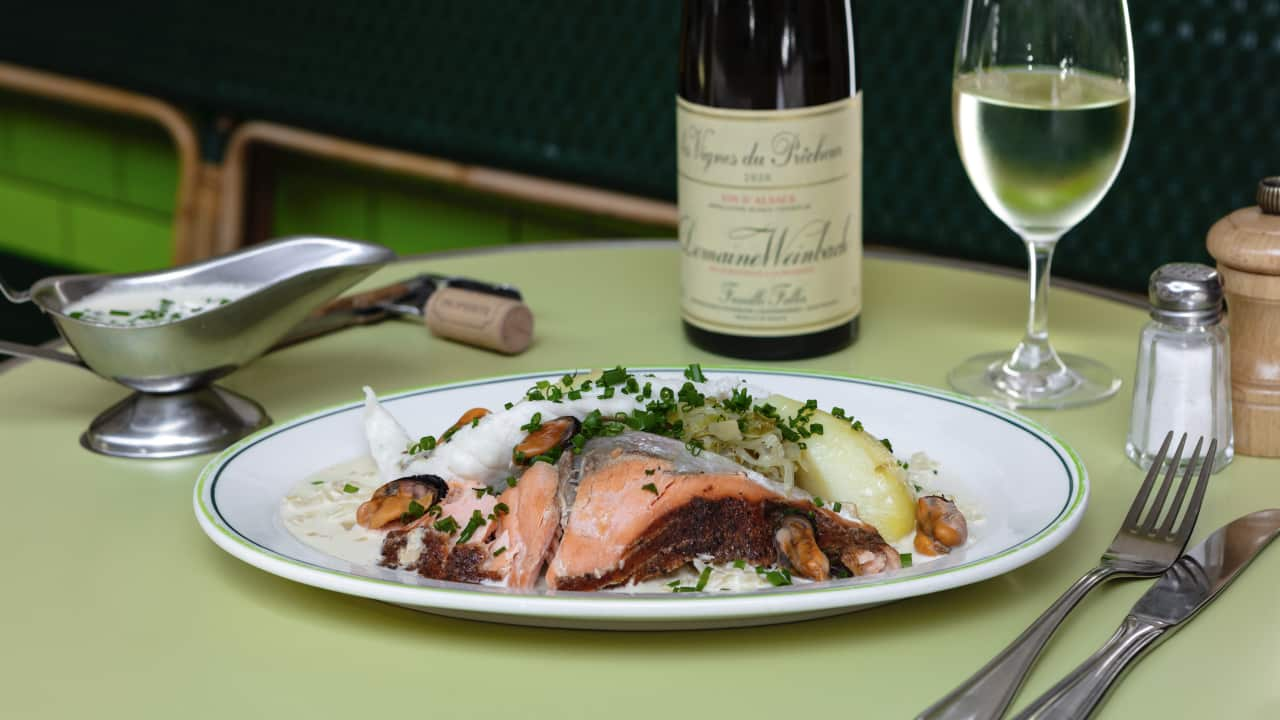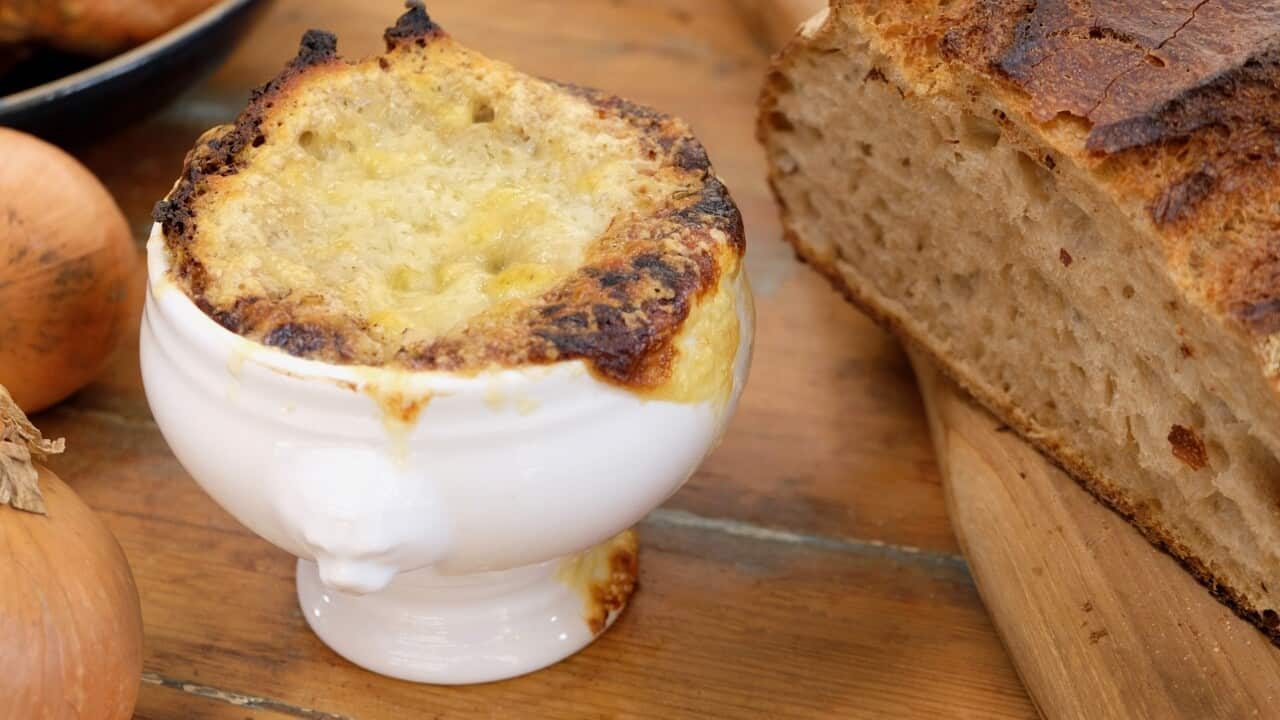--- Sample the delicacies in Guillaume's Paris, and follow our French tour guide as he ventures around the arrondissements at 8pm Thursdays on SBS, SBS Food and streaming free . Visit the for recipes, articles and more. ---
When most people picture French dishes, they usually imagine the country’s most famed culinary icons: foie gras, boeuf bourguignon, escargot, tarte tatin or soufflé.
But when the French-born restaurateur, Christophe Zauner visualises the mouth-watering food of his homeland, he dreams of fish and sauerkraut – otherwise known as choucroute au poisson.
“I love eating choucroute because it makes me feel happy,” Zauner, co-owner of in Adelaide (), tells SBS. “It makes me feel like I am home.”
The dishes in these regions just go to show that there is way more to France and traditional French food than the few classics that most people know about.
The home that Zauner speaks of is , a region in North Eastern France that’s situated very close to the German border. Due to its geographical location, Alsace has passed between French and German control several times since the 1600s. As a result, Alsatian culture is very French but also quite German. “There is a lot of German influence in the region, especially when it comes to the food."
The iconic dish of the Alsace region is choucroute, which means sauerkraut in the Alsatian dialect. Although it's based on the German dish, Alsatian sauerkraut is made with white wine, onion and spices like juniper berries. "Choucroute is served in all restaurants throughout the region.”

Choucroute garnie from Alsace: fermented cabbage with smoked bacon, pork loin, sausages stewed in white wine with onion and spices. Source: iStockphoto
Cabbage-filled memories
For Zauner, childhood memories were made of choucroute. The pickled cabbage dish was a staple on the kitchen table of his youth. “When I was 12, I lived in a town that grew a lot of cabbage,” he says. “Our garden led directly to the farmer’s field. Every year, when the cabbage was harvested, the farmer used to chuck a few cabbages over the fence for us to have. My mum always made choucroute from them.”
Traditionally, sauerkraut always formed part of choucroute garnie: a dish that pairs pickled cabbage with pork sausages, blood sausages, or other salted pork cuts and potatoes to create a warming and hearty meal.
READ MORE

Choucroute garnie
"However in the late 1970s, French chefs started to experiment with recipes. A chef named created a new dish with choucroute by replacing pork with fish.”
Choucroute au poisson was born, featuring three types of fish – halibut, salmon, and smoked haddock –sauerkraut and a sauce of Alsatian riesling and butter. Sometimes mussels are also added.
“This fish and sauerkraut dish was traditionally served throughout Alsace in riverside villages, bordering the Rhine. Today, restaurants throughout the entire region feature the dish on their menus.”
Choucroute is also quite popular in Paris. Brasseries selling on-tap beer were first created by Alsatians in Paris during the . In fact, the term brasserie is French for 'brewery'. Once the Alsatians started selling draught beer to Parisians, they also introduced sauerkraut as part of their offering. Choucroute has stayed on the menus of Parisian brasseries ever since.
Getting to know Alsatian sauerkraut
Although choucroute au poisson is one of Zauner’s favourite dishes, it’s not always on the menu at . It's a signature dish that sometimes appears as a special. The Alsatian says this is because most Australian diners tend to gravitate towards more mainstream French dishes like confit duck or onion soup over more diverse dishes like fish and sauerkraut.
Alsace is also famous for its white wine. Hey Jupiter has an extensive collection of Alsatian rieslings on its beverage list. But again, Alsatian wine is not very popular throughout Australia.
“Not many people in Australia know much about Alsace or its regional cuisine. But Alsace is such a beautiful region offering great food, wine, and architecture. It is a must-visit in France.” This spring, Zauner plans to serve his favourite dish, choucroute au poisson, on a temporary basis at his brasserie. In doing so, he hopes that more Australians will come to understand the real food of France and its diverse regional influences.
This spring, Zauner plans to serve his favourite dish, choucroute au poisson, on a temporary basis at his brasserie. In doing so, he hopes that more Australians will come to understand the real food of France and its diverse regional influences.

The proud Alsatian-born co-owner of Hey Jupiter, Christophe Zauner, sips on a glass of riesling from Alsace, France. Source: By Matthew Bugeja
He explains that, just like Alsace, many regions of France have multicultural offerings because they share European borders and histories. So there’s a plethora of regional French meals, bearing continental influences, yet to try.
“If you go to the French regions that are close to the Italian border, you’ll find French dishes that are inspired by Italian cuisine. If you go to French regions that are close to the Spanish border, you’ll be in Basque country and eat food with both a French and Spanish influence.
“The dishes in these regions just go to show that there is way more to France and traditional French food than the few classics that most people know about.”







